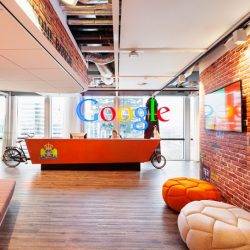August 1, 2018
Flexibility, daylight and a well-designed office are amongst most desirable workplace features
 Capital One has published the results of its latest survey of US full-time professionals for their thoughts on workplace design and the working environment as it relates to their productivity, innovation and collaboration with colleagues. According to the resulting 2018 Work Environment Survey of 3,500 office based respondents in urban centres across the US, many value flexibility and workplace design, particularly when evaluating whether to stay at their current job or consider a new employment opportunity. Employees also place a great deal of focus on technology, design elements such as lighting and agile workspaces, and personal wellbeing.
Capital One has published the results of its latest survey of US full-time professionals for their thoughts on workplace design and the working environment as it relates to their productivity, innovation and collaboration with colleagues. According to the resulting 2018 Work Environment Survey of 3,500 office based respondents in urban centres across the US, many value flexibility and workplace design, particularly when evaluating whether to stay at their current job or consider a new employment opportunity. Employees also place a great deal of focus on technology, design elements such as lighting and agile workspaces, and personal wellbeing.





















 More than 6 million UK adults are already self-employed or working as a contractor in the so-called gig economy, with a further 6 percent of currently full-time professionals looking to make the transition this year. New research of more than 2,000 UK adults commissioned by
More than 6 million UK adults are already self-employed or working as a contractor in the so-called gig economy, with a further 6 percent of currently full-time professionals looking to make the transition this year. New research of more than 2,000 UK adults commissioned by 











August 9, 2018
Is driver behind the widening parental leave gap a lack of rights in the gig economy?
by Sara Bean • Comment, Flexible working, Legal news, News, Workplace